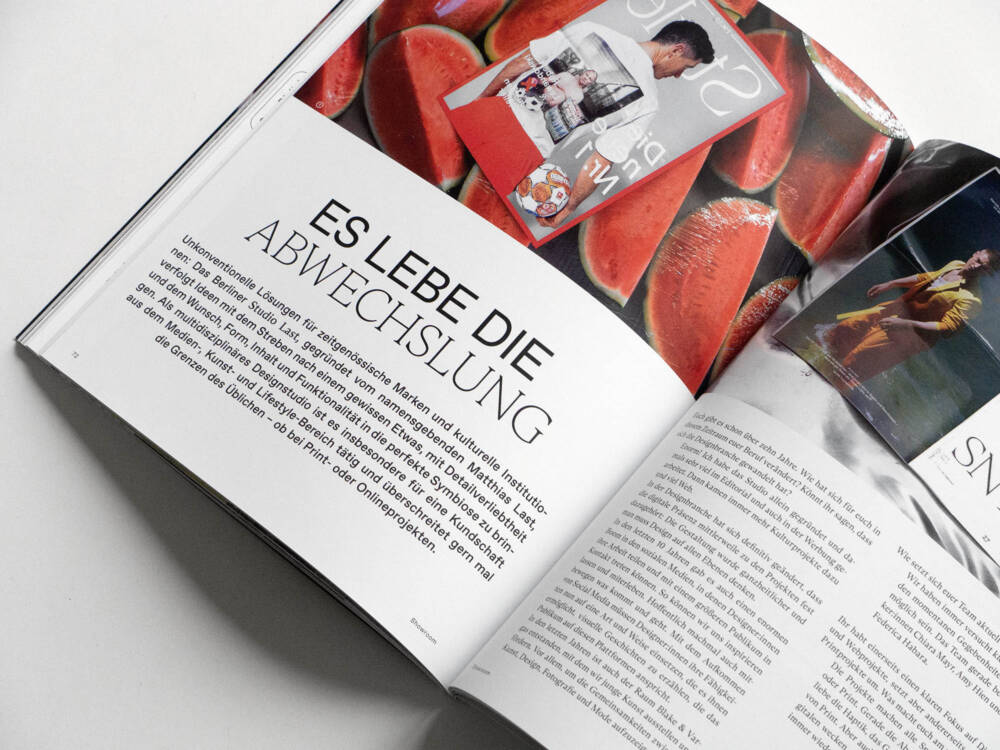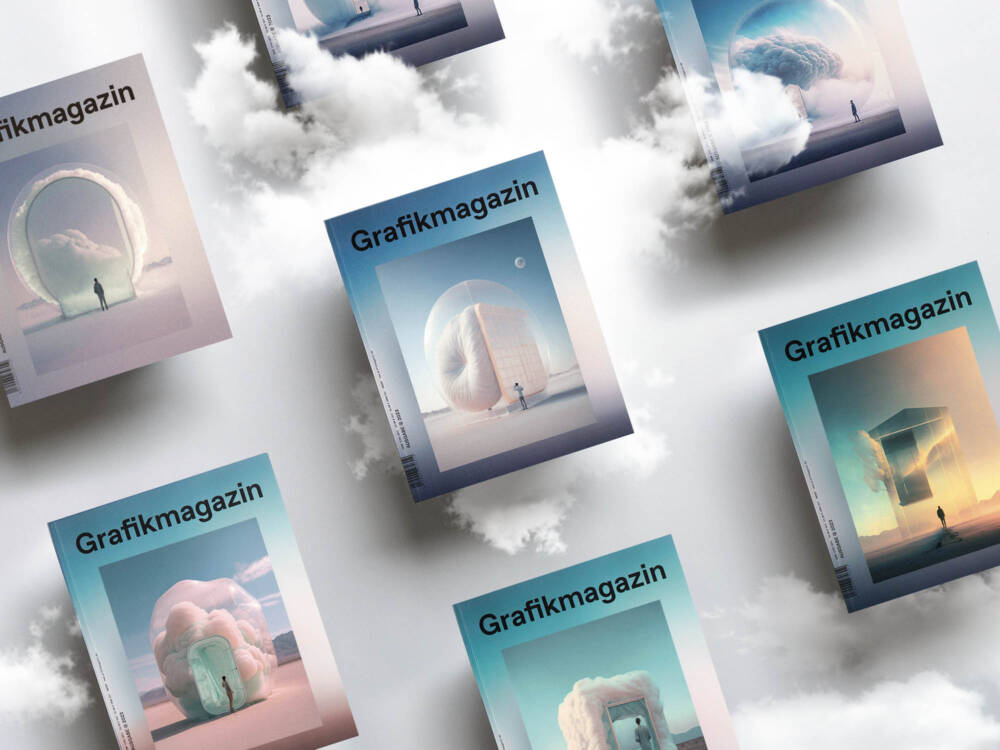Grafikmagazin about AI – A little awe, a little wonder
Grafikmagazin’s latest issue delves into “Digital Branding,” showcasing the power of artificial intelligence in design and the fusion of digital and analog forces. The magazine also emphasizes the significance of human judgment and experience while highlighting projects that celebrate interpersonal connections and presenting diverse brandings and illustrations.
Grafikmagazin is a German-language trade journal for communication design and is aimed primarily at professional graphic designers, creative agencies and design students from the DACH region and beyond. Every two months, it presents outstanding works from the fields of graphic design, typography, illustration, photography, design theory, research, paper and printing on more than 100 pages.

A little awe, a little wonder
AI is not something to be afraid of, but rather something to be in awe of, advises AI expert and journalist Marie Kling. “Awe, of something that is bigger than me.” That can also be very close to admiration and amazement, she adds.
That perhaps describes our feelings in the team well, not least with regard to our work on the current cover: 1000 different versions were produced by our art director Tobias Holzmann with the help of Midjourney, and he was both in awe and amazed at what the AI is now capable of. But it also became clear to him: we are still miles away from total automation – after all, experts are still needed to evaluate, select, and prepare the print delivery. Thanks to Konica Minolta, who produced the cover using digital printing, digital and analog forces came together here in the finest possible way.
Speaking of which, in our Grafik+ “Digital Branding” things get down to business here, of course: we asked creative coding specialist Patrik Hübner whether the future of design is generative, and Studio Weholo how to optimally combine design with technology. Saga Digital introduced us to the fabulous world of online stores, while Jäger & Jäger took us into the magical spheres of digital sound sculptures. These and other projects can be discovered on 18 pages.

Design theory informs practice
René Spitz and Christoph Böninger, board members of the iF Design Foundation, are also convinced that digitization will continue to advance. “What can’t be digitized, however, is judgment,” they say. “Shaping that judgment, in turn, requires experience, which is fed by the interplay of hand and head.” We talk to the two of them, as well as to Angelika Nollert, about the high-profile program that turns Die Neue Sammlung zum Campus and negotiates the future of design teaching. The interview appears in the second part of our focus topic “Design Education” , in addition to which the design philosopher Mara Recklies has her say, who in recent years has taught hundreds of students one thing above all: to ask more and better questions about design theory and ultimately practice.

Bridges of humanity
For our Design & Research section, we have gathered four projects that deal with interpersonal relationships in a special way. The Graphic Design Lab provides training opportunities for up-and-coming Ukrainian creatives. The Memberful Design initiative promotes engagement in creative communities, and the final project “Visible Design Spaces” creates more visibility for designers who take female or non-gender conforming perspectives. With the bachelor thesis of Magdalena Schmid we present another touching work: She researched the death penalty in the USA and contacted numerous death row inmates and their families for her book.

Gripping branding, sublime illustration
Our showrooms bring out again what we love about our job: the versatility of our industry, the numerous non-linear biographies full of dynamism and inventiveness! Carlo Stanga left architecture behind and followed his passion, illustration. MetaDesign has been working in brand design for 40 years, still setting contemporary accents and valuing great respect. Morgane Tubiana of the French Studio Clac dispenses with briefings and works out powerful appearances in an individual process. And Berlin’s Studio Last doesn’t let itself be deprived of the joy of variety – the team around Matthias Last implements exquisite print projects on the one hand, but also works with a clear focus on digital branding on the other. Perfect for this issue, then.

The new issue of Grafikmagazin, back issues and various subscriptions are available in their store.
Presstext by Christine Moosmann & Sonja Pham
Credit images: © Grafikmagazin, 2023